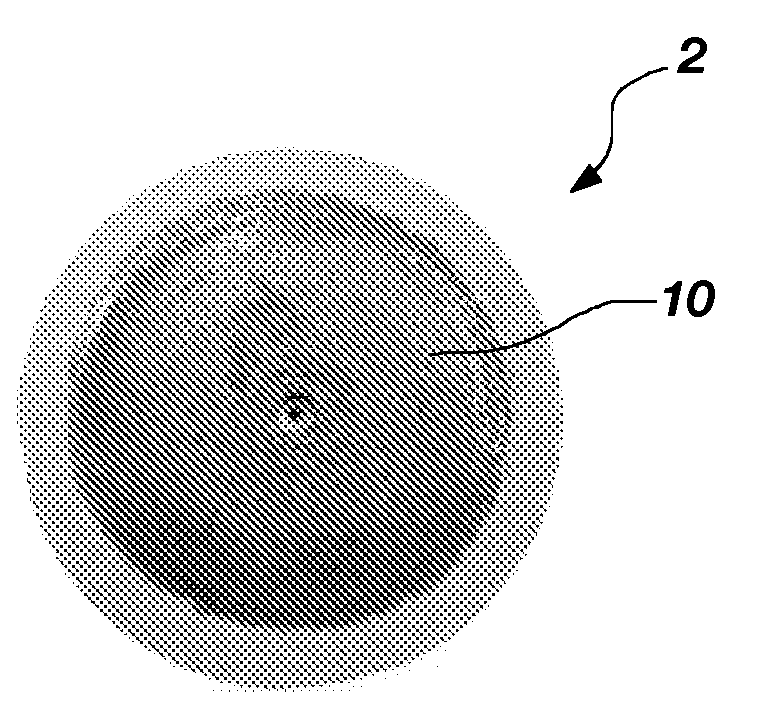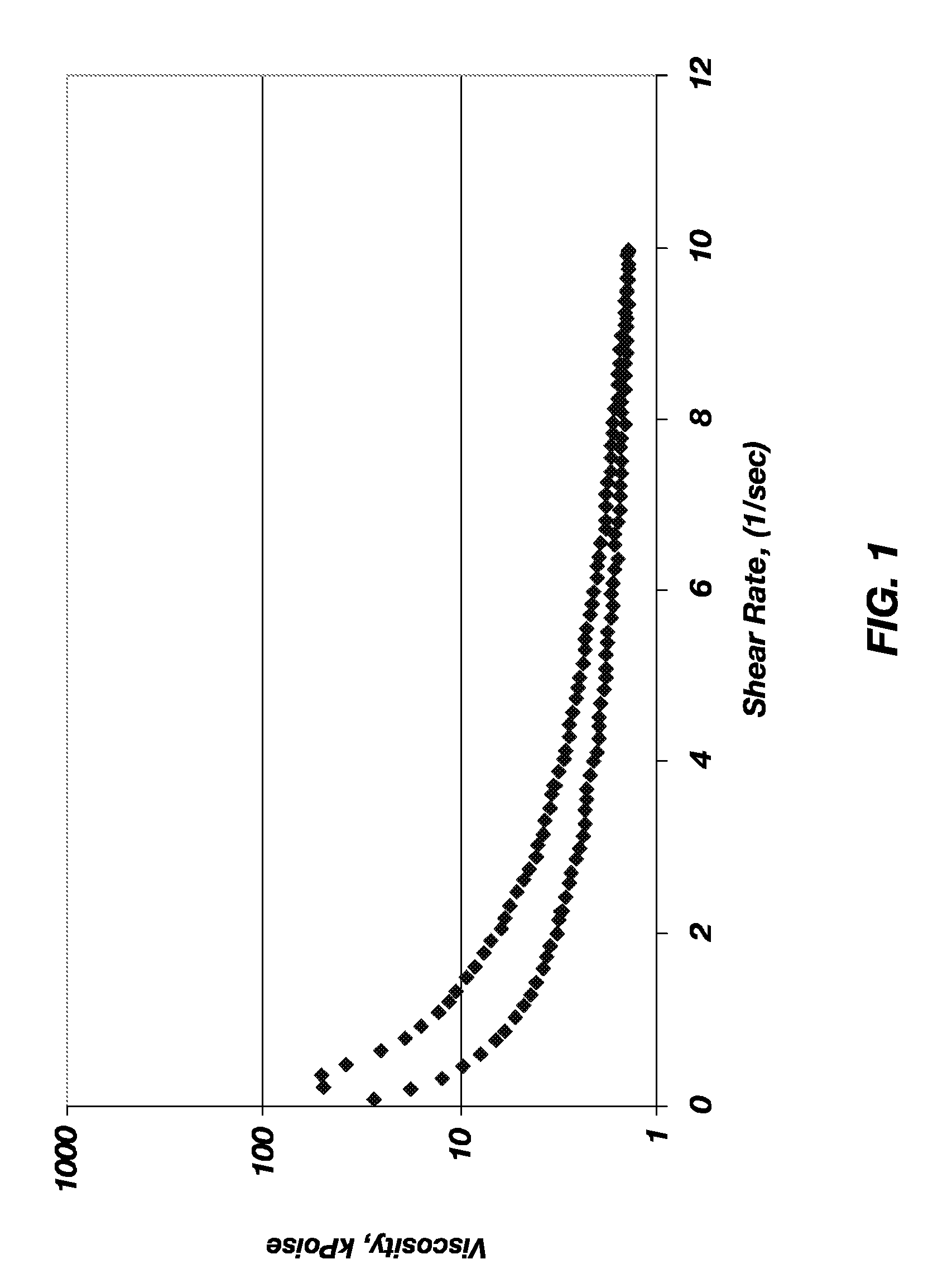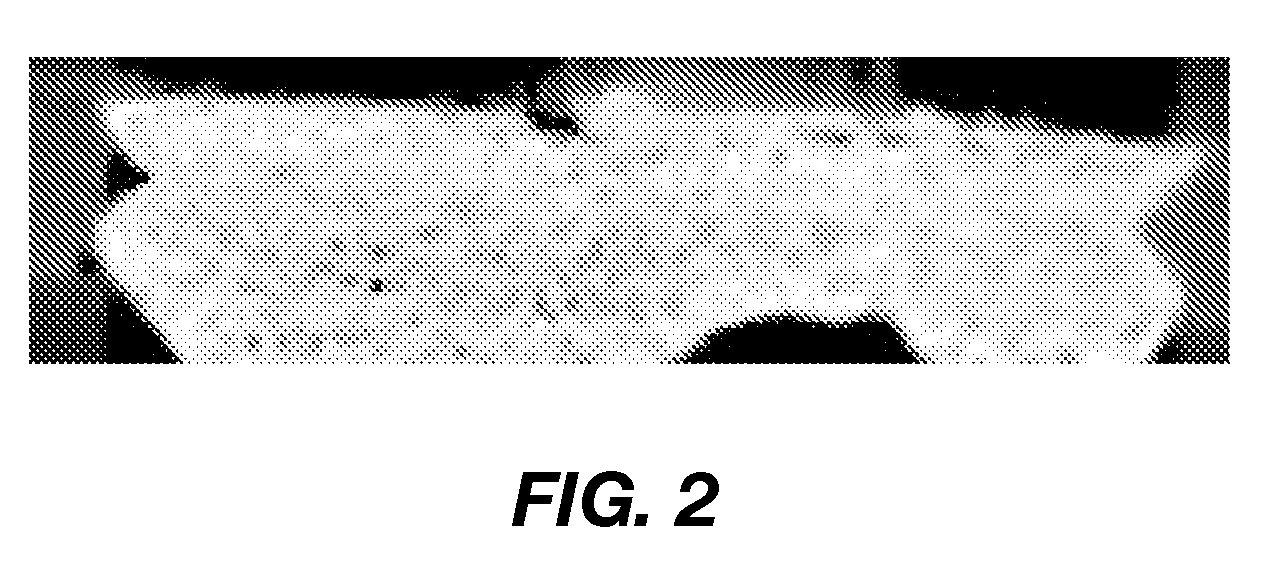Methods of repairing a substrate
a technology of ceramic adhesives and substrates, applied in the field of ceramic adhesives, can solve the problems of not being formulated for use in space, the need to repair a component of a space vehicle during orbit, and the unique challenges of a component while the space vehicle remains in orbi
- Summary
- Abstract
- Description
- Claims
- Application Information
AI Technical Summary
Benefits of technology
Problems solved by technology
Method used
Image
Examples
example 1
Formulation of ATK NOAX-3124
[0046]A precursor of a ceramic material that included 20 wt % AHPCS and 80 wt % of a mixture of ceramic powders (47.5 wt % SiC, 47.5 wt % ZrB2, and 5 wt % Y2O3) was prepared by mixing the ceramic powders with the AHPCS. The AHPCS and the ceramic powders were mixed using a planetary mixer to improve the homogeneity of the mixture. The AHPCS and the ceramic powders were mixed under vacuum (approximately 28 in. Hg) to facilitate removal of volatile material from the mixture. This ceramic adhesive according to the present invention is referred to as ATK NOAX-3124, the “ATK” material, or the “ATK / COIC” material.
example 2
Characterization of ATK NOAX-3124
[0047]The ceramic adhesive described in Example 1 was characterized by ARES mechanical spectrometry, thermogravimetric analysis (“TGA”), differential scanning calorimetry (“DSC”), and Shore A hardness. The ceramic adhesive was characterized using conventional techniques. The ARES mechanical spectrometry was conducted by conventional techniques using an ARES rheometer (available from TA Instruments) to determine the strain, strain rate, and shear stress as a function of time and temperature of the ceramic adhesive. The shear modulus of ATK NOAX-3124 as a function of time and temperature is shown in FIG. 3.
[0048]Dynamic TGA was conducted on ATK NOAX-3124 by conventional techniques using a TA Instruments 2950 thermogravimetric analyzer to determine the weight loss of the ceramic adhesive as a function of temperature in nitrogen. The results of the TGA testing are shown in Table 1.
TABLE 1TGA Analysis of ATK NOAX-3124.Wt % remaining at 600° C.97.14Wt % re...
example 3
Repair of RCC Using ATK NOAX-3124
[0052]FIGS. 5 and 6 illustrate an RCC 2 (substrate) that had surface scratches 4 or cracks and a fracture 6 with a through hole 8 approximately 7 / 16-inch (approximately 1.11 cm) in diameter. ATK NOAX-3124 was applied to the RCC 2, filling in the surface scratches 4, the fracture 6, and the through hole 8. The ATK NOAX-3124 was then cured under vacuum at 65.5° C. (150° F.) for up to 18 hours. After curing, the surface scratches 4, the fracture 6, and the through hole 8 were filled with the cured adhesive 12, repairing the RCC 2.
[0053]The repaired RCC was then subjected to torch testing using an oxy-propane torch to simulate a reentry environment. In the torch test, the repaired RCC was subjected to a heat flux of approximately 130 BTU / ft2 sec for approximately 15 minutes in atmospheric conditions, during which the surface temperature reached approximately 3000° F. FIG. 7 shows the RCC 2 after being subjected to the torch testing.
[0054]ATK NOAX-3124 wa...
PUM
| Property | Measurement | Unit |
|---|---|---|
| temperature | aaaaa | aaaaa |
| particle size | aaaaa | aaaaa |
| particle size | aaaaa | aaaaa |
Abstract
Description
Claims
Application Information
 Login to View More
Login to View More - R&D
- Intellectual Property
- Life Sciences
- Materials
- Tech Scout
- Unparalleled Data Quality
- Higher Quality Content
- 60% Fewer Hallucinations
Browse by: Latest US Patents, China's latest patents, Technical Efficacy Thesaurus, Application Domain, Technology Topic, Popular Technical Reports.
© 2025 PatSnap. All rights reserved.Legal|Privacy policy|Modern Slavery Act Transparency Statement|Sitemap|About US| Contact US: help@patsnap.com



